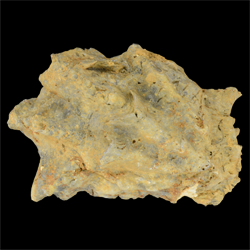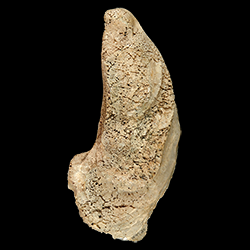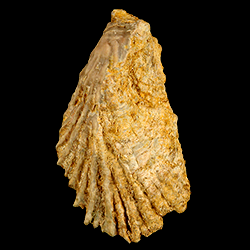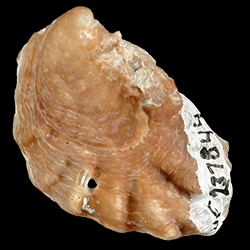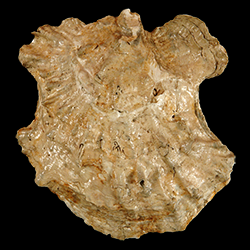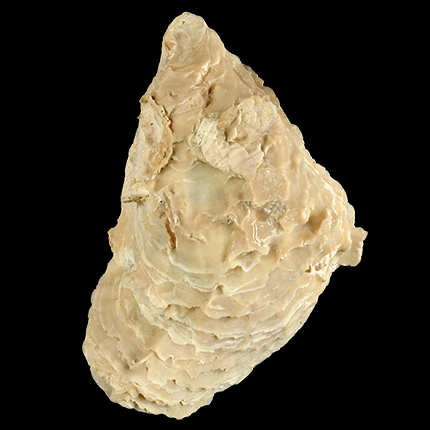
Ostreidae
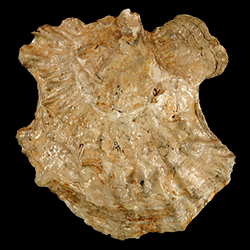
Overview
Common name: True oysters.
Key morphological features: Shells of many species are highly ecophenotypic, however all oysters have a monomyarian muscle arrangement. The single adductor muscle scar has a straight or concave dorsal edge and is rounded (i.e., convex) ventrally, forming a half moon or crescent shape. The scars are also located postero-centrally or postero-ventrally on the shell. The valves are subequal, with the left valve often more inflated than the right valve, although this is not true of all genera and also can depend on the extend of the attachment surface on which the oyster grows. The hinge lacks teeth following larval development, but the right valve has a convex structure called a buttress by Stenzel (1971) and the left valve has a corresponding concave hinge structure called the resilifer. The left valve is also characterized by an exterior attachment scar where, in life, the oyster had attached itself to a substrate. These scars are highly variable and can be small or may extend across the entire height of the left valve. Source: Stenzel, H.B. 1971. Oysters. in Cox et al., eds., Treatise on Invertebrate paleontology, Part N, Mollusca 6, Volume 3. The University of Kansas and Geological Society of America. 272 pp.; Harry, H.W. 1985. Synopsis of the supraspecific classification of living oysters (Bivalvia: Gryphaeidae and Ostreidae). The Veliger 28(2): 121-158.
Geological range: Upper Triassic to Recent (source: Stenzel, 1971).
Geographic distribution: The Ostreidae have had a circum-global distribution since the Jurassic Period, and living oysters inhabit all continents except Antarctica (Liu et al., 2011). A distributional map for modern Ostreidae may be accessed from OBIS. A distributional map for ancient Ostreidae may be accessed from the Paleobiology Database.
Diversity: There are 78 recognized living species of Ostreidae and 17 genera (WoRMS, unvetted). The Paleobiology Database recognizes 29 fossil genera and 676 fossil species (unvetted).
Paleoecology: The Ostreidae are sessile, filter-feeding bivalves that live permanently attached to hard substrates. They inhabit a wide range of marine environments including full marine to brackish salinities and tropical to temperate latitudes. Several species preferentially settle on the shells of conspecifics, aggregating to form reef or bed structures.
Phylogenetic status: Monophyletic. Recent molecular phylogenetic analyses by Salvi et al. (2014) and Liu et al. (2011) support the monophyly of Family Ostreidae.
